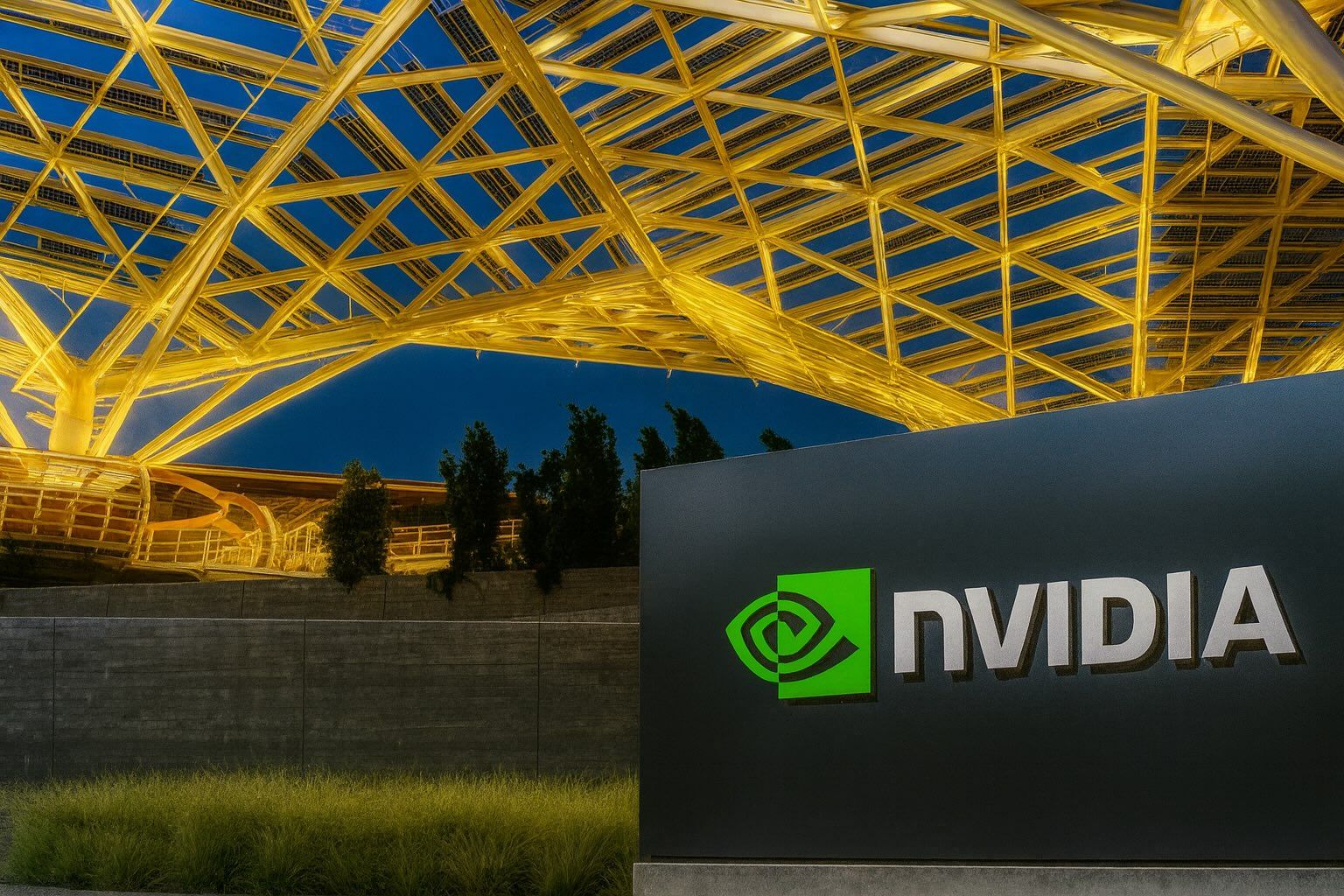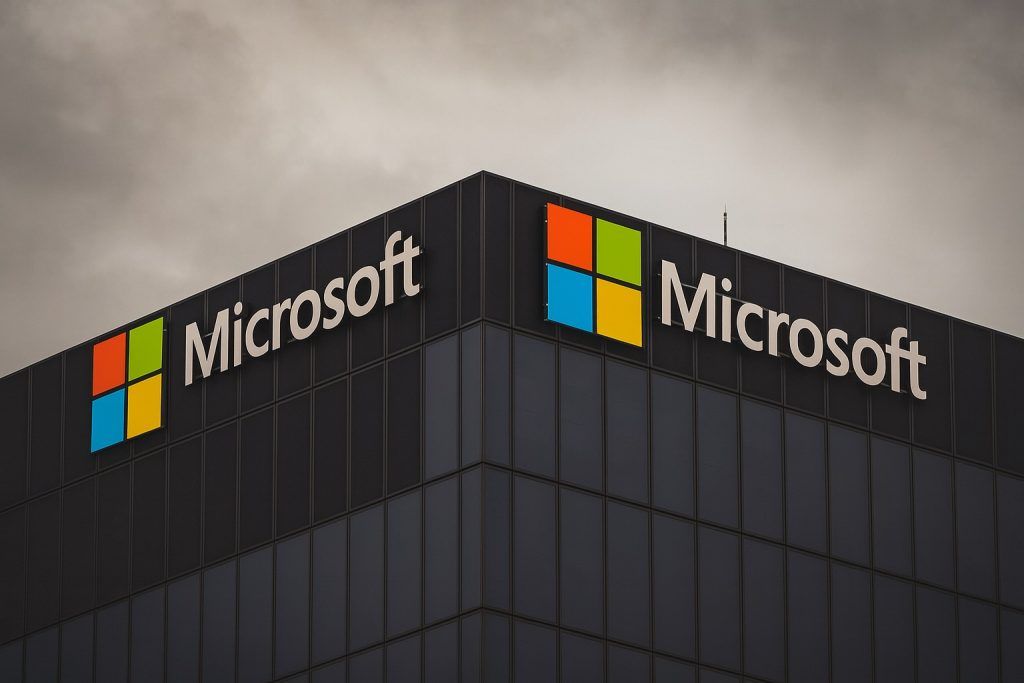Nvidia (NASDAQ: NVDA) heads into Friday’s US session under pressure, with investors juggling Fed worries, fresh policy risks around China, leaked internal emails, and massive expectations ahead of next week’s earnings. Here’s a concise look at what matters for Nvidia stock before the opening bell on November 14, 2025.
1. Where Nvidia’s share price stands before the bell
- Thursday’s close: Nvidia fell around 3.5–3.6% on November 13, finishing near $187 per share, as part of a sharp tech-led sell-off that hit the Nasdaq and key AI names. [1]
- Year-to-date performance: Even after the pullback, Nvidia is still up roughly 40% in 2025, and its share price has gained about 1,000% since the launch of ChatGPT in late 2022, cementing its status as the world’s most valuable company. [2]
- Market value & valuation: Recent data puts Nvidia’s market capitalization in the $4.5–5 trillion range, with a forward P/E around 53, placing it at the center of the debate over rich AI valuations. [3]
- Distance from record high: NVDA hit an all‑time high around $212 in late October, so the stock is now trading roughly 10–15% below its peak. [4]
Pre-market indication:
As of early Friday, US stock index futures are lower, and reporters note that Nvidia is down roughly 1–1.1% in premarket trading, alongside declines in other chipmakers like Broadcom, Intel, AMD and Applied Materials.
Premarket moves can change quickly, but heading into the open the setup is: Nvidia weaker, tech under pressure, and volatility elevated.
2. Fed jitters and a fragile tech tape frame today’s trading
Today’s Nvidia trade is happening against a nervous macro backdrop:
- Rate-cut hopes fading: Comments from multiple Federal Reserve officials on Thursday pushed back expectations for a December rate cut, with Fed funds futures now pricing only ~50% odds of another reduction.
- Futures in the red: U.S. stock futures are extending Thursday’s slide, with Nasdaq 100 futures notably weaker as traders dump high‑valuation tech names that are most sensitive to interest-rate expectations.
- Volatility picking up: The Cboe VIX (“fear gauge”) has moved above 21, signaling a more jittery market than earlier this fall.
For Nvidia, this matters because any stock-specific negative headline is now amplified by macro stress. Even solid news can be sold if investors are primarily de‑risking their AI exposure.
3. Amazon and Microsoft back tougher curbs on Nvidia’s China sales
One of the most important headlines for Nvidia today is political, not purely financial:
- The Wall Street Journal reported that Amazon and Microsoft are backing US legislation that would further restrict Nvidia’s ability to export advanced chips to China.
- Complementary coverage from market newswires notes that the proposal would tighten export controls while giving major US cloud players preferential access to cutting-edge AI chips at home.
Why this matters for the stock today:
- China has been a meaningful market for Nvidia’s high-end data‑center GPUs. Tighter curbs increase long‑term regulatory risk around that revenue stream.
- The optics are awkward: two of Nvidia’s biggest customers in AI infrastructure are also supporting rules that could limit Nvidia’s sales to a key growth region.
- Friday’s premarket weakness in NVDA is being partly linked by media and analysts to these headlines, alongside broader AI valuation concerns.
Investors will be watching for any response from Nvidia, Amazon, Microsoft or US lawmakers that clarifies how far this legislation might go.
4. Leaked internal emails highlight “fundamental disconnect” in software sales
A Business Insider investigation published today reveals internal Nvidia emails that shed light on growing pains in its enterprise software business:
- Sales leaders described a “fundamental disconnect” between Nvidia and the legal and procurement teams at large, highly regulated clients in sectors like finance and healthcare.
- Emails from the summer flagged issues such as:
- Inconsistent software sales messaging (“everyone is hacking their own decks together”).
- Difficulty explaining Nvidia AI Enterprise (NVAIE) and related software to non‑technical stakeholders.
- Tensions over data security, indemnity, and damages caps in contracts.
- Despite these hurdles, an internal Q3 FY26 forecast showed:
- Standalone software projected to reach 110% of sales targets,
- While software bundled with hardware was expected to hit only 39% of its goal.
- NVAIE itself was forecast at 186% of its target, driving most of the ~$78.7 million software sales estimate for the quarter in the Americas.
Takeaway for traders today:
Software is still a relatively small slice of Nvidia’s revenue, but it’s crucial for high‑margin, recurring income and deeper customer lock‑in. These emails don’t break the long‑term software thesis, but they do:
- Underscore that commercial and legal friction could slow the ramp in sensitive industries.
- Add another headline risk on a day when investors are already uneasy about Nvidia’s sky‑high expectations.
5. Q3 FY26 earnings on November 19 are the next major catalyst
Almost every note and headline this morning points to one thing: Nvidia’s earnings next week.
- Date and time: Nvidia reports Q3 FY26 (quarter ended Oct. 26) on Wednesday, November 19, after the market close, with a follow‑up webcast at 2:00 p.m. PT.
- Consensus expectations:
- Revenue around $54.6–54.8 billion,
- Adjusted EPS near $1.23–$1.25,
- Implied ~54–56% year‑over‑year growth on both the top and bottom lines.
- Index impact: Reuters notes Nvidia now accounts for roughly 8% of the S&P 500 and about 10% of the Nasdaq 100, so its earnings reaction can strongly sway major US indices.
Analysts and strategists are explicit that this print could be a make‑or‑break moment for the AI trade:
- Barclays calls investor caution “understandable” and says the results could determine whether the AI “supercycle” and capex boom remain on track or show early signs of plateauing, which could trigger more unwinding in AI‑linked positions.
- Other research (Investors.com and Economic Times) emphasises that markets are looking for reassurance on AI‑chip demand, data‑center spending, and Nvidia’s guidance into 2026.
For today’s session, this means every intraday move in NVDA is happening under the shadow of that upcoming report. Short‑term volatility may be elevated as traders position ahead of Wednesday.
6. Wall Street is hiking price targets even as valuation fears grow
Despite the recent pullback, several top analysts have raised their targets on NVDA ahead of earnings:
- Oppenheimer increased its price target from $225 to $265, reiterating an Outperform rating and arguing Nvidia “remains best positioned to win in AI,” citing the ramp of its Blackwell platform and continued strength in data‑center demand.
- Susquehanna bumped its target from $210 to $230, calling Nvidia’s setup “strong” into earnings and pointing to over $500 billion in visible AI‑related revenue through 2026 as Blackwell rack‑scale systems roll out.
- Morgan Stanley recently argued that Nvidia is positioned to deliver “the strongest results” among mega‑cap tech this season, raising its target to around $220 and highlighting continued hyperscaler capex on AI.
- KeyBanc and other firms have also reaffirmed Overweight ratings with targets around $250.
At the same time:
- Nvidia’s forward P/E in the low‑50s and multi‑trillion‑dollar market value keep it at the center of “AI bubble” debates, including fresh warnings from the head of Deutsche Bank’s investment arm that there is “no playbook” for today’s AI valuations.
Net effect: Wall Street’s official ratings remain overwhelmingly bullish, but there is a clear split between:
- Analysts who see continued upside as AI infrastructure spending ramps, and
- Skeptics who worry that expectations for growth and margins are already stretched.
That tension is part of why the stock is so sensitive to every headline going into today’s open.
7. Michael Burry’s anti‑AI bet and SoftBank’s exit keep “bubble” talk alive
Another narrative weighing on sentiment: high‑profile investors pushing against AI leaders like Nvidia.
Michael Burry’s short against Nvidia
- Reuters reported that Michael Burry—the investor famous for “The Big Short”—is closing his hedge fund, Scion Asset Management, after recently establishing large bearish positions in Nvidia and Palantir via put options.
- Additional coverage shows Burry has warned that Big Tech, especially AI‑heavy “hyperscalers,” may be overstating earnings by depreciating expensive AI hardware like Nvidia’s GPUs over longer schedules (5–6 years) than their real economic life.
- A fresh analysis article today summarises “Michael Burry’s Play Against AI Stocks,” highlighting his multi‑hundred‑million‑dollar bets and how they feed fears of an AI bubble.
SoftBank sells out of Nvidia
- Earlier this week, SoftBank disclosed that it has sold its entire 32.1 million‑share stake in Nvidia for about $5.83 billion, redirecting capital toward OpenAI and broader AI infrastructure bets.
These moves don’t change Nvidia’s near‑term fundamentals, but they:
- Reinforce the idea that savvy investors are taking the other side of the crowded AI trade, and
- Add to the psychological overhang around NVDA on a day when the stock is already fragile.
8. Real-world AI partnerships are still expanding Nvidia’s footprint
Balancing the worries, there’s also positive, fundamentals‑driven news for Nvidia today that underscores its deep integration into real‑world AI deployments.
Rockwell Automation: Generative AI at the industrial edge
- Rockwell Automation announced a new integration of Nvidia’s Nemotron Nano small language model (SLM) into its FactoryTalk Design Studio and other industrial workflows.
- The partnership aims to bring generative AI directly to factory floors, running on edge hardware with constrained space and power, and enabling real‑time decision-making in manufacturing environments.
Nokia and AI‑ready 5G networks
- An AI Magazine feature today describes how Nokia and Telenor’s Danish joint venture (TNN) are rolling out AI‑ready 5G networks using Nokia baseband platforms while Nvidia invests about $1 billion in AI‑RAN infrastructure to support more intelligent, software‑defined networks.
These kinds of announcements:
- Reinforce Nvidia’s role beyond data centers—into telecoms, industrial automation, and the broader “AI at the edge” ecosystem.
- Provide a fundamental counterweight to short‑term volatility narratives, showing that customer adoption continues to broaden geographically and across sectors.
9. Options expiry and positioning could amplify intraday moves
Friday is also a key options expiry for Nvidia, which can magnify volatility:
- Data for options expiring November 14, 2025 show very heavy open interest across many strike prices, with a “max pain” level (where most options expire worthless) around $190.
- High open interest in short‑dated calls and puts often leads to hedging flows from market makers, which can:
- Act as a magnet around certain price levels (like $190), or
- Amplify moves if the stock breaks out of that range and dealers are forced to chase.
Separately, the existence of products such as the AXS 1.25x NVDA Bear Daily ETF (NVDS)—a leveraged bearish fund that has seen intense interest this year—highlights how many traders are using tactical downside instruments to express views on Nvidia’s volatility.
For intraday action today, that means:
- Sharp swings are possible, especially around round numbers like $180, $185, and $190 where options positioning is thick.
- Moves might not be purely “fundamental” – some will be driven by derivatives and hedging mechanics.
What Nvidia traders and investors should watch today
Putting it all together, here are the key things to monitor around the open and through Friday’s session:
- Price action vs. premarket indication
- Does Nvidia remain roughly 1% lower into the open, or does buying/selling pressure push it sharply away from that level?
- Watch how it trades around the $185–190 zone, which lines up with heavy options open interest.
- Any new headlines on US–China export controls
- Further details or political pushback on the Amazon/Microsoft‑backed bill could move Nvidia quickly, given how sensitive investors are to China‑related revenue risk.
- Follow-through on the Business Insider email leak
- Look for any commentary from Nvidia, customers, or analysts on the company’s enterprise software strategy and whether these sales frictions are material to its long‑term margin story.
- Shifts in AI sentiment across peers
- Nvidia rarely trades in isolation. Moves in AMD, Broadcom, Palantir, and other AI‑linked names can reinforce or fight against the tape in NVDA.
- Fresh analyst notes or rating changes
- More price‑target hikes or, conversely, any downgrades or valuation warnings can shift the narrative quickly ahead of earnings.
- Macro headlines and Fed commentary
- With rate‑cut odds in flux and a backlog of economic data due after the government shutdown, unexpected macro news could drive another risk‑off or relief swing across the entire AI complex.
Final word
Nvidia enters Friday’s US session as the linchpin of the global AI trade: enormously profitable, deeply embedded in real‑world deployments, but also priced for sustained hyper‑growth and exposed to policy and macro shocks.
- Short term: Expect elevated volatility around today’s open as traders digest Fed headlines, the China‑export story, and internal‑email leaks, all while positioning ahead of next week’s earnings and options expiry dynamics.
- Medium term: The November 19 earnings report is widely seen as the next decisive test of whether Nvidia—and the broader AI supercycle—can keep living up to the hype.
Nothing in this article is financial advice or a recommendation to buy or sell any security. It’s a summary of public information and market commentary as of the morning of November 14, 2025, intended to help you understand what’s driving Nvidia stock before the US market opens.
References
1. www.tipranks.com, 2. www.reuters.com, 3. www.reuters.com, 4. www.tradingview.com








